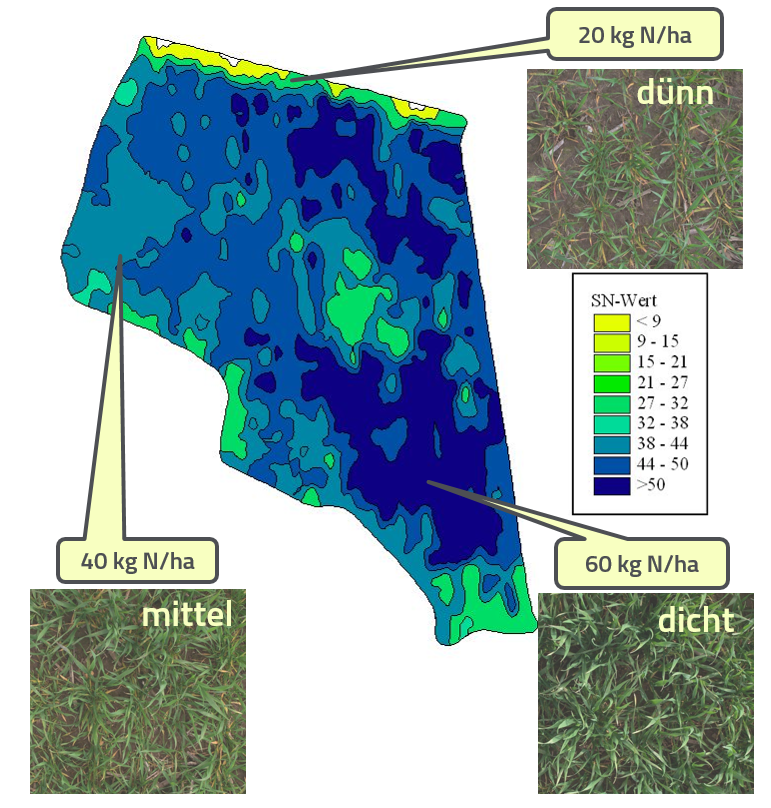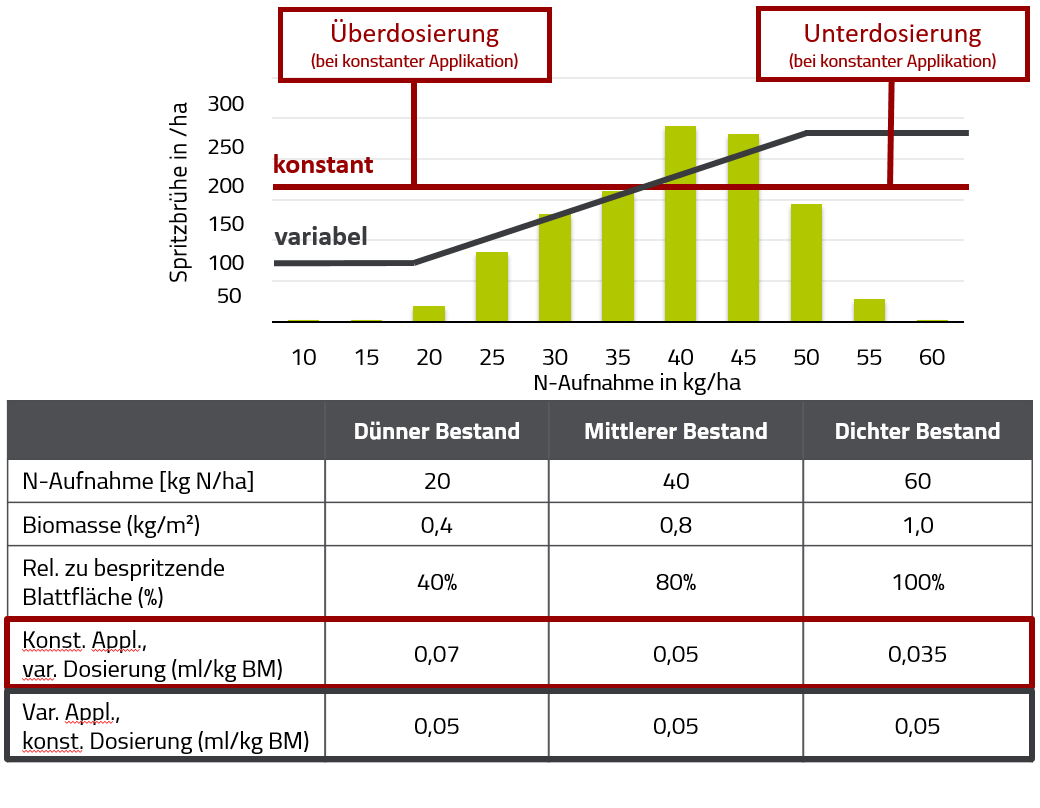Agronomischer Hintergrund
Die Hauptziele für die Applikation von Wachstumsreglern (WR) und Fungiziden (FU) sind:
- Gesunderhaltung der Bestände zur Vermeidung von Ertrags- und Qualitätsverlusten
- Vermeidung von Lager
Durch die variable Dosierung von WR und Fu kommen zwei weitere Ziele hinzu:
- Vermeidung von Ertragsverlusten durch pflanzenphysiologischen Stress, ausgelöst durch zu hohe Mengen an PSM
- Vermeidung von Resistenzbildungen von Schaderregern gegenüber Wirkstoffen
Auf nahezu allen Schlägen findet man Unterschiede in der Biomasse bzw. der N-Aufnahme der Pflanzen.

Werden diese Bestände mit einer einheitlichen Aufwandmenge an PSM behandelt kommt es zwangsläufig zu Fehldosierungen:
Bestände mit viel Biomasse / hoher N-Aufnahme: Unterdosierung
Mögliche Folgen:
- Reduzierte Wirkung und Wirkungsdauer des PSM
- Ausbreitung pilzlicher Erreger
- Förderung von Resistenzen
- Entstehung von Lager
Bestände mit wenig Biomasse / niedriger N-Aufnahme: Überdosierung
Mögliche Folgen:
- Negative Ertragseffekte durch pflanzenphysiologischen Stress
- Umweltbelastung durch zu hohe Wirkstoffmenge
Die variable Applikation von WR und FU unterscheidet sich von der konstanten Applikation darin, dass die Heterogenität innerhalb eines Bestandes / Schlages für die Bemessung der Aufwandmenge entscheidend ist.

Durch eine variable Applikation, basierend auf der aktuellen N-Aufnahme von Teilflächen können WR und FU optimal auf der Fläche verteilt werden. Mithilfe hinterlegter Regelfunktionen wird in Teilflächen mit hoher N-Aufnahme /Biomasse die Aufwandmenge an Spritzbrühe erhöht, in Teilflächen mit geringerer N-Aufnahme /Biomasse dagegen reduziert.
The main goals for the application of growth regulators (WR) and fungicides (FU) are:
- Maintaining healthy stocks to avoid loss of yield and quality
- Avoiding stock
The variable dosage of WR and Fu adds two more goals:
- Avoiding loss of yield due to plant physiological stress caused by excessive amounts of PSM
- Avoidance of pathogen resistance to active substances
On almost all fields there are differences in the biomass and the N uptake of the plants.

If these stocks are treated with a uniform application rate of PSM, incorrect doses are inevitable:
Stocks with a lot of biomass / high N uptake: Underdosing
Possible consequences:
- Reduced effectiveness and duration of the PSM
- Spread of fungal pathogens
- Promotion of resistance
- Creation of bearings
Low biomass / low N uptake:Overdose
Possible consequences:
- Negative yield effects due to plant physiological stress
- Environmental pollution due to excessive amount of active ingredient
The variable application of WR and FU differs from the constant application in that the heterogeneity within a stock / field is decisive for the measurement of the application rate.

Thanks to a variable application, based on the current N uptake of partial areas, WR and FU can be optimally distributed over the area. With the help of stored control functions, the application rate of spray liquor is increased in areas with a high N uptake / biomass, but reduced in areas with a lower N uptake / biomass.
